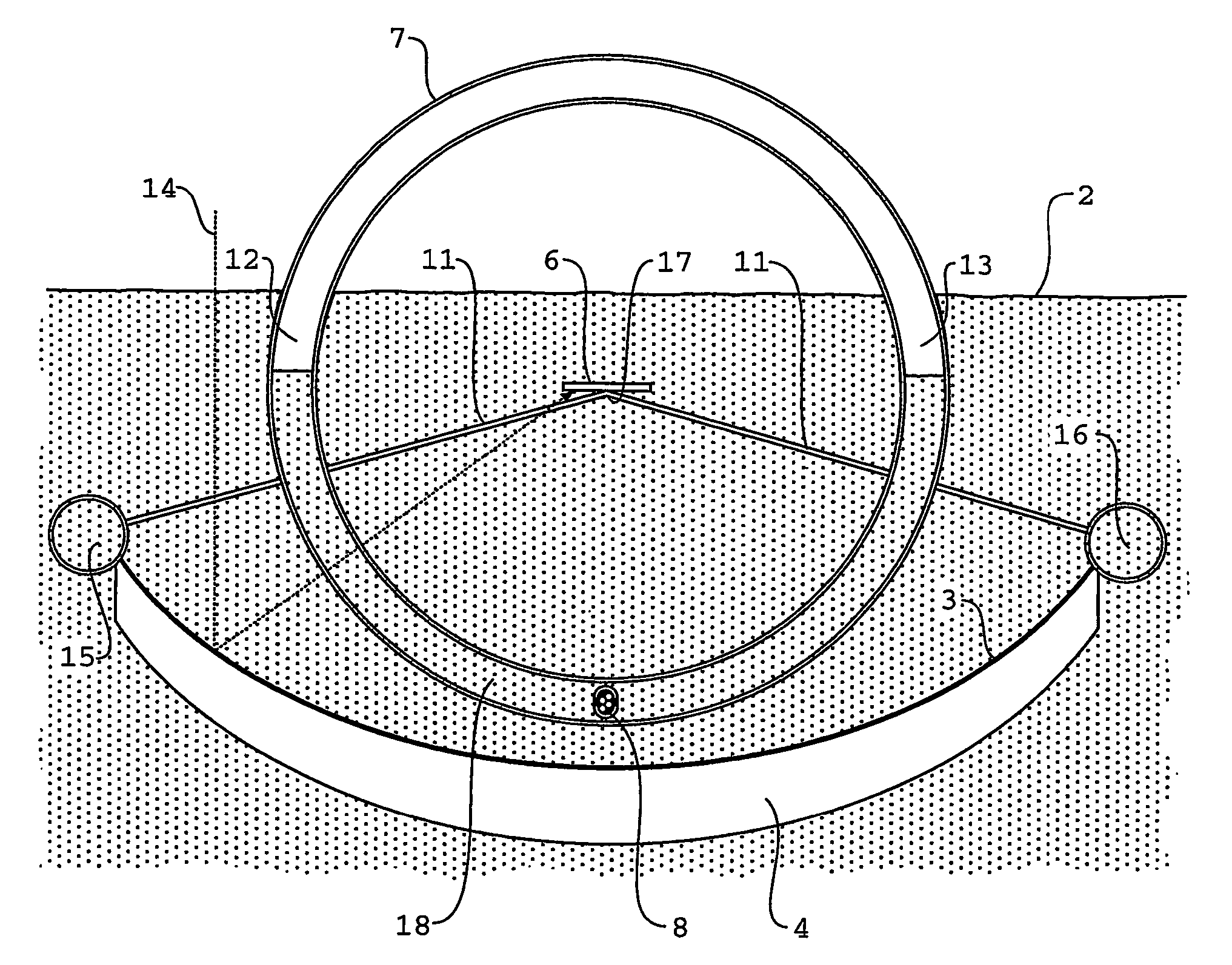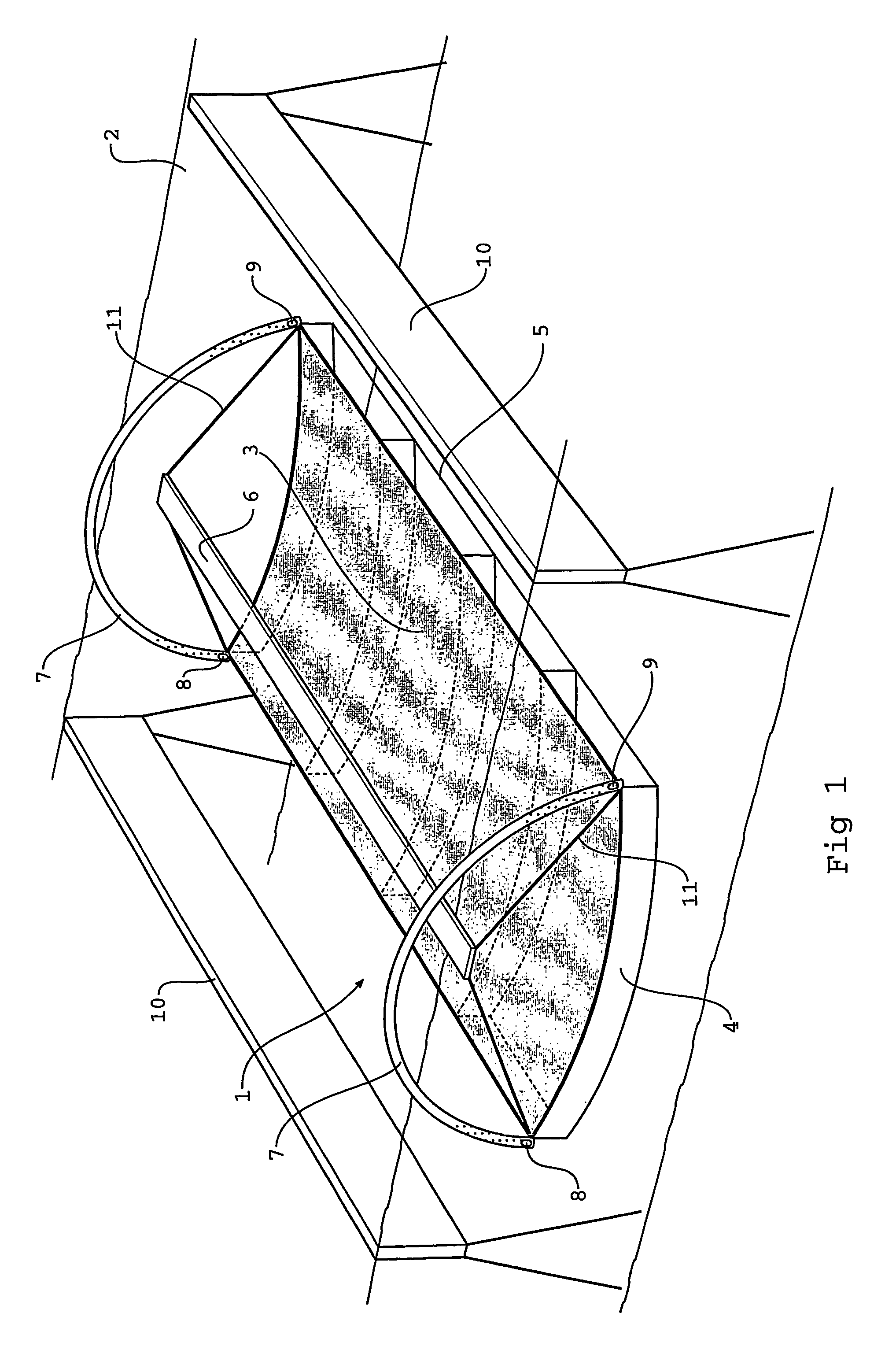Collector for solar radiation
a solar energy and collector technology, applied in the direction of light radiation electric generators, generators/motors, lighting and heating apparatus, etc., can solve the problems of increasing the cost of solar energy conversion, and increasing the complexity of the concentrator structure, so as to achieve simple lateral buoyancy balance, and the effect of increasing the energy per unit area
- Summary
- Abstract
- Description
- Claims
- Application Information
AI Technical Summary
Benefits of technology
Problems solved by technology
Method used
Image
Examples
Embodiment Construction
[0035]According to the embodiment of the present invention which is illustrated by reference to FIG. 1, a plurality of assemblies, one of which is generally indicted by reference numeral 1, are immersed in a pond or other body of transparent liquid 2. It is preferred that the pond of liquid 2 be water.
[0036]The complete immersion of the assembly 1 in the liquid serves to simultaneously protect and cool the apparatus whilst allowing easy rotation about any axis through the center of gravity of the collector. The assembly is given slight positive buoyancy to keep it substantially below the surface, but touching the surface.
[0037]The solar collector assembly includes a reflector that is generally indicated at 3 (shaded in the diagram). In its preferred form, the reflector 3 has a reflecting surface which is substantially parabolic in a cross-section of the collector, and which extends longitudinally to form a generally trough-shaped reflecting surface.
[0038]Each reflector assembly 3 is...
PUM
 Login to View More
Login to View More Abstract
Description
Claims
Application Information
 Login to View More
Login to View More - R&D
- Intellectual Property
- Life Sciences
- Materials
- Tech Scout
- Unparalleled Data Quality
- Higher Quality Content
- 60% Fewer Hallucinations
Browse by: Latest US Patents, China's latest patents, Technical Efficacy Thesaurus, Application Domain, Technology Topic, Popular Technical Reports.
© 2025 PatSnap. All rights reserved.Legal|Privacy policy|Modern Slavery Act Transparency Statement|Sitemap|About US| Contact US: help@patsnap.com



